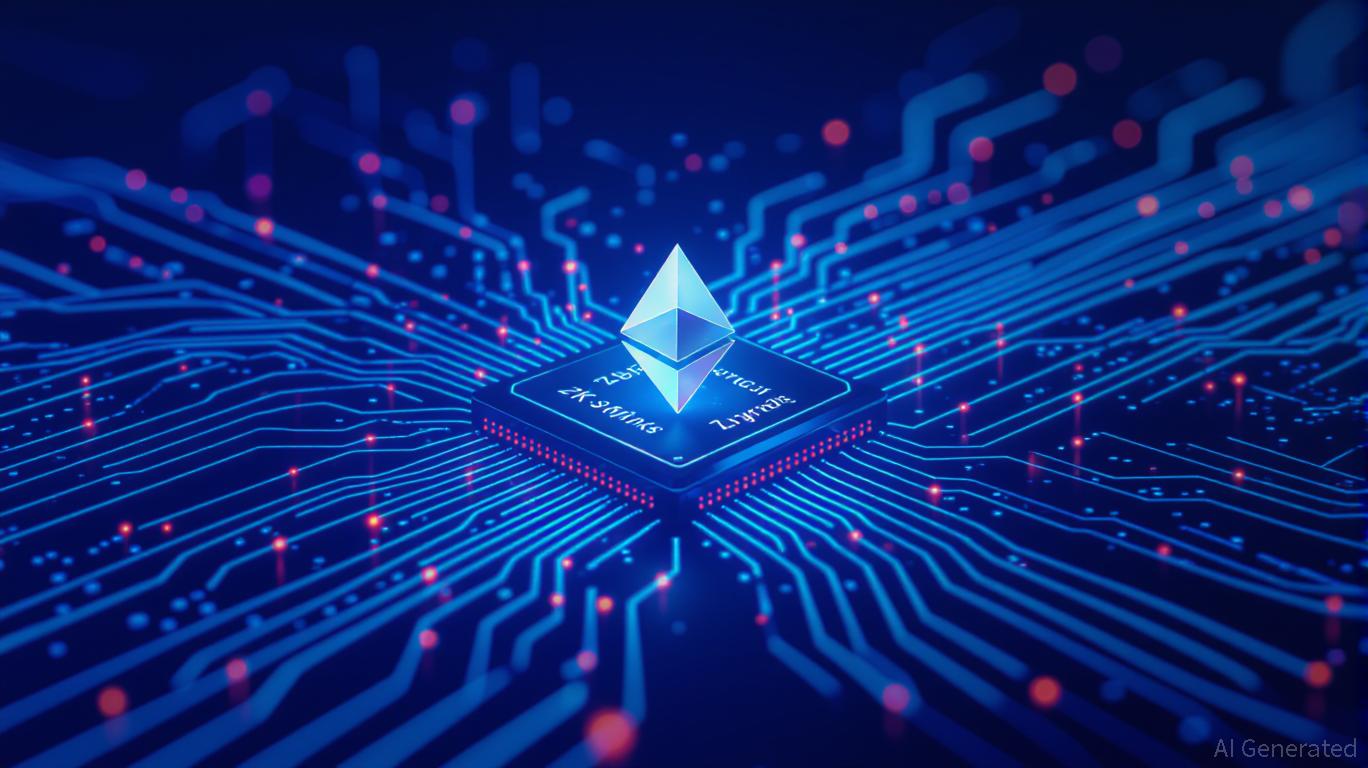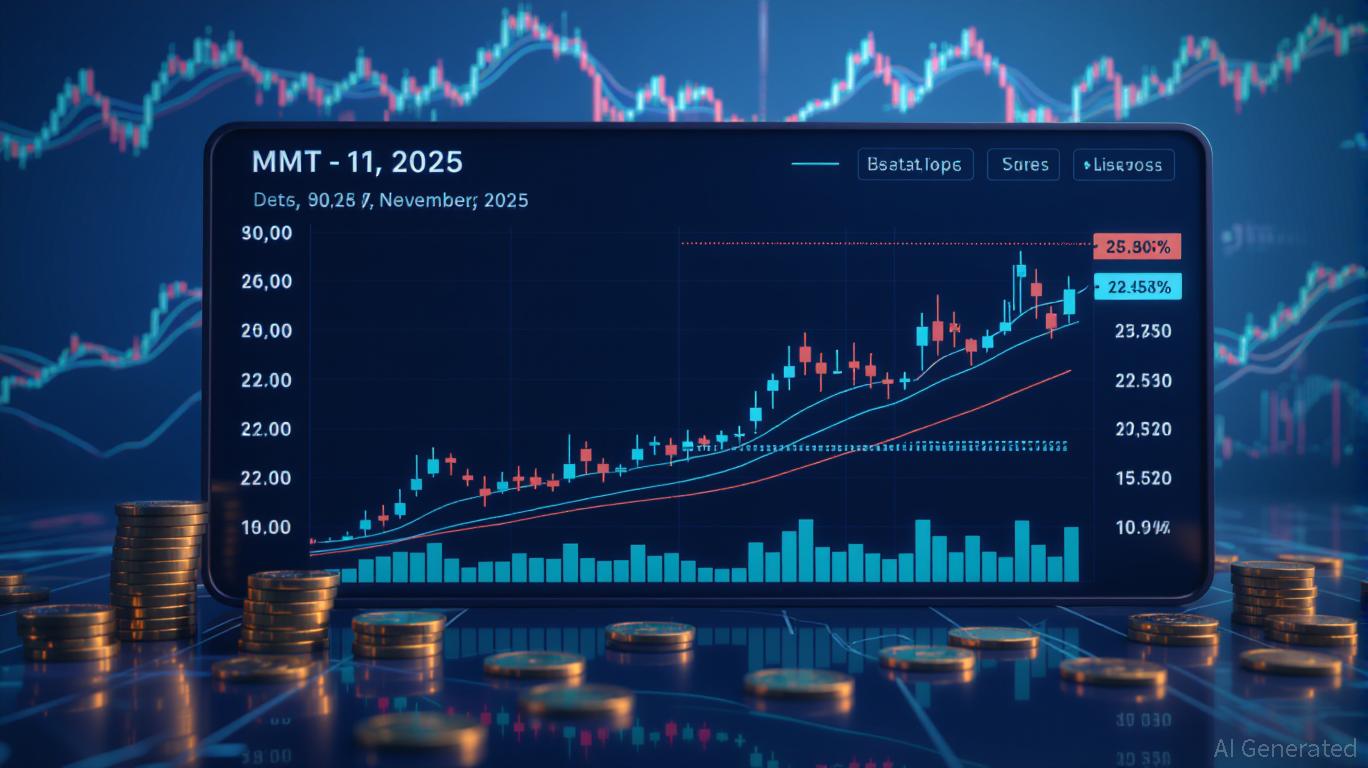Vitalik Buterin Backs ZKsync: Is This the Next Era for Layer 2 Expansion?
- Vitalik Buterin's endorsement elevates ZKsync's Atlas upgrade as a key Ethereum Layer 2 scaling solution. - ZKsync's 15,000 TPS Atlas and upcoming 30,000 TPS Fusaka upgrades boost institutional adoption and real-time transaction capabilities. - ZK token's 65% rally faces pressure from token unlocks, while ZKsync competes with Arbitrum and Optimism for TVL and enterprise contracts. - Partnerships with Deutsche Bank and Citi highlight ZKsync's institutional traction in private transaction frameworks. - Ana
Technical Advancements: The Atlas and Fusaka Upgrades
ZKsync’s development roadmap has consistently drawn attention from both developers and investors. The Atlas upgrade, which debuted in 2025, brought a 15,000 TPS capacity and a
Recent data shows that

Tokenomics and Market Volatility: A Double-Edged Sword
The ZK token experienced a dramatic surge after Buterin’s endorsement. In Q4 2025, its price jumped 65% in a week, fueled by his support and proposed changes to tokenomics,
Bitget analysts point out that ZKsync’s “ZKnomics” approach aims to link token value with network activity,
Institutional Adoption: From Banks to Enterprise
Interest from institutional players in ZKsync has soared since Buterin’s endorsement.
By late 2025, ZKsync had formed partnerships with financial institutions looking for scalable, cost-effective solutions for cross-border payments and asset tokenization
Competitive Landscape: ZKsync vs. Arbitrum and Optimism
Despite ZKsync’s impressive technical progress, its investment prospects must be weighed against its main competitors. Arbitrum, with $12 billion in TVL and 1.5 million daily transactions,
ZKsync’s edge comes from its ZK Stack and traction with institutions. The Fusaka upgrade’s promise to boost throughput to 30,000 TPS could help it close the gap with Arbitrum, but there are still execution risks. As one analyst put it, “ZKsync’s future depends on turning its technical strengths into widespread adoption—something Arbitrum has already achieved at scale
Analyst Outlook: Price Predictions and Scenarios
Bitget’s research team has outlined three possible paths for ZK’s price in 2025. In a bullish scenario, where Ethereum Layer 2 solutions see rapid adoption and ZKsync lands major partnerships, the token could climb to $0.40–$0.60. A moderate outcome would see prices between $0.20–$0.35, while a bearish scenario could push it down to $0.10–$0.15 if market sentiment worsens or ZKsync fails to stand out
These forecasts highlight the token’s volatility but also its potential for significant gains or losses. The main factors—Fusaka’s rollout, institutional uptake, and broader Ethereum upgrades—will ultimately decide if ZKsync becomes a key player in Layer 2 scaling or fades from prominence.
Conclusion: A Calculated Bet on ZK's Future
Vitalik Buterin’s backing has undoubtedly raised ZKsync’s profile, but the investment case is still complex. While the platform’s technical progress and institutional interest are promising, its relatively small TVL and stiff competition from established players like Arbitrum and Optimism remain significant challenges. For investors, the crucial question is whether ZKsync can turn Buterin’s endorsement into lasting adoption and ecosystem growth.
With the Fusaka upgrade approaching and Ethereum’s scaling efforts advancing, ZKsync faces a pivotal moment. If it can fulfill its promises, it could become a leading Layer 2 solution. Yet, in the unpredictable world of blockchain, even the most promising projects are not guaranteed success.
Disclaimer: The content of this article solely reflects the author's opinion and does not represent the platform in any capacity. This article is not intended to serve as a reference for making investment decisions.
You may also like
Solana News Today: "Solana Treasury Allocates Billions in Staking, Offering 7.7% Returns Amid Ongoing Market Skepticism About Crypto Rebound"
- Upexi , a Nasdaq-listed Solana treasury firm, reported $66.7M net income in Q1 2026, driven by $78M in unrealized gains from its 2.18M SOL holdings. - The Solana treasury sector now holds 24.2M SOL ($3.44B), with Upexi ranking fourth and staking yields averaging 7.7% as a corporate asset class. - Market volatility triggered defensive moves like Upexi's $50M share buyback, while its stock trades at 0.68x NAV amid broader crypto skepticism. - Solana's on-chain activity outpaces Ethereum , with TVL reaching

COAI's Significant Price Decline: The Result of Leadership Instability, Ongoing Legal Issues, and Ambiguous Regulatory Environment
- COAI Index fell 88% YTD in 2025, driven by AI/crypto AI sector selloff amid governance failures and regulatory uncertainty. - C3.ai's leadership crisis and unresolved lawsuit eroded investor trust, compounding COAI's decline as index cornerstone. - Vague CLARITY Act left AI-based crypto projects in legal gray zones, triggering risk-off trading toward established tech stocks. - C3.ai's $116.8M Q1 loss and sector-wide weakness highlighted structural risks despite 21% revenue growth. - Analysts debate if CO

MMT Value Forecast and Investor Outlook for November 2025: Evaluating Reliability During Economic Changes
- MMT token surged 1,300% in Nov 2025 due to Binance listings, airdrops, and institutional investments. - 1607 Capital increased MMT-linked fund stake by 84.7%, but dividend sustainability remains unclear. - Fed policy and missing inflation data (due to 2025 government shutdown) cloud macroeconomic alignment. - MMT's volatility ($4.40 to $2.54) highlights speculative nature despite structural catalysts. - Long-term credibility depends on macroeconomic clarity and Fed policy shifts, not just exchange-driven

LUNA Declines by 0.62% as Ongoing Yearly Downtrend Persists in Uncertain Market Conditions
- LUNA fell 0.62% on Nov 16, 2025, continuing an 80.61% annual decline amid crypto market volatility. - The drop reflects macroeconomic pressures, regulatory scrutiny, and waning investor risk appetite in digital assets. - Technical analysis shows broken support levels and weak buying pressure, indicating a prolonged bearish phase. - Backtesting reveals sharp declines often trigger panic selling and sector-wide market erosion, compounding losses. - Prolonged depreciation risks eroding investor confidence u